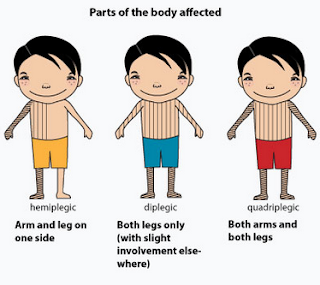Diagnosing cerebral palsy
Developmental delays are often reported by parents or observed by a doctor
during routine well-baby checks.
A doctor diagnoses CP based on:
Questions about the child's medical history, including details about the
mother's pregnancy.
A physical exam to look for signs of CP. The doctor will look to see if the
child retains newborn reflexes longer than normal. This can be a sign of CP.
Postures and basic muscle function, hearing, and vision are usually checked.
Screening tests. Developmental questionnaires and other tests may be
done.
MRI of the head. This test can findbrain abnormalities.
If the diagnosis is unclear, more tests may be done. Sometimes these tests
can help find out the severity of CP.
A doctor may closely monitor a newbornor child for signs of CP if he or she
has known risk factors. These factors may be related to problems during
pregnancy or birth, being born early (premature birth), or problems that occur
within the first 2 or 3 years of life.
Doctors are careful not to diagnose CP too early, because some babies who
have motor skill problems soon after birth never get CP.
Sometimes symptoms may not appear until the nervous system matures. It can
take up to a few years before doctors can tell if a baby with body movement and
posture (motor) problems has CP.
Evaluating and monitoring cerebral palsy
After CP is diagnosed, a child will also be checked for other medical
conditions that can occur with cerebral palsy, such as:
Other developmental delays in addition to ones already found. Developmental
abilities will be checked to find out if new symptoms, such as speech and
language delay, appear as a child's nervous system matures.
Intellectual disability. This can be checked by intelligence testing.
Seizures. An electroencephalography (EEG) is used to check for abnormal
activity in the brain if a child has a history of seizures.
Problems with feeding and swallowing.
Vision or hearing problems.
Behavioral problems.
Most of the time, a doctor can predict many of the long-term physical effects
of CP when a child is 1 to 3 years old. But sometimes such predictions aren't
possible until a child reaches school age. That's when learning, communication
skills, and other abilities can be checked.


没有评论:
发表评论